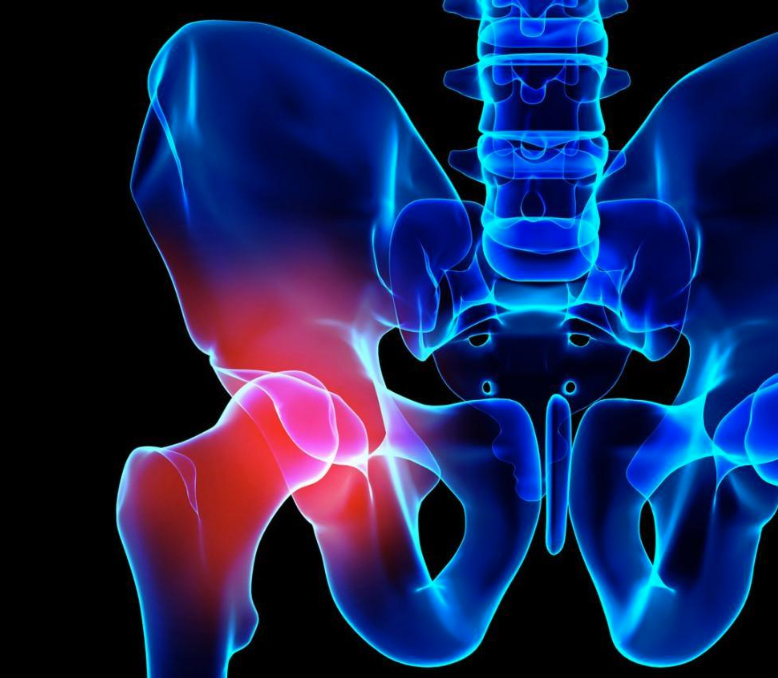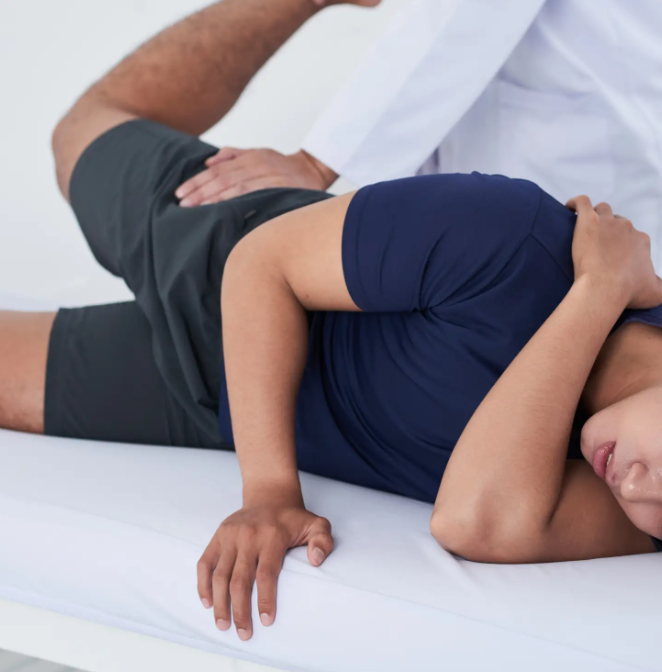In this month of South Simcoe Physiotherapy’s blog post, we are going to explore another real patient’s physiotherapy experience suffering from hip pain – right from the initial assessment and diagnosis to the patient returning to their goals and graduating from physiotherapy!

The Case
How did this individual present at initial assessment?
Patient Background
The presenting patient was a 45 year old. This individual reported a gradual onset of right hip pain over the past 6 months. This individual did not remember a specific mechanism of injury, or a certain moment in time when their hip began to hurt. They report their pain to be a pinch like feeling on the front of their right hip that will go in towards their groin. They also report some referral pain down the front of their right thigh, but does not go past their knee. They report the pain to range from a 0-4/10 in intensity. This individual also denied any locking, clicking or catching in their right hip. They did not report any previous right hip injuries. This individual is normally physically active, however they do sit at a desk for work.
Aggravating factors: prolonged walking, running, occasionally stairs, rising from a seated position, squatting down to pick something up, skating for hockey
Easing factors: rest, ice, anti-inflammatory medications
Client’s physiotherapy goals were to:
1.Reduce their right hip pain
2.Improve their walking distance and tolerance
3.Ability to run
4.To play hockey with minimal to no right hip pain
The Physical Examination
On initial examination, this individual was off loading their left hip in sitting (shifting their torso to the left side). On gait analysis, they had a slight limp when beginning to walk, however as they kept walking the limp reduced.
They had reduced right hip range of motion, most significantly in hip flexion, internal rotation and external rotation. All of these ranges of motion were pain provoking, especially internal rotation, where they described it as a pinching in their right groin.

On strength testing, this individual showed reduced strength in their right hip abductors, flexors and adductors. They noted some discomfort when assessed their right hip adductors and flexors strength.
Multiple special tests were performed, however the ones to note were a positive right hip FABER and a positive right hip flexion-adduction-internal rotation test. Also, they had demonstrated a limitation in their hip flexors muscle length via a modified Thomas Test.
On palpation, they primarily had tenderness when assessing their right groin and hip flexor musculature.
Diagnosis: This individual likely had right femoroacetabular impingement (FAI).
What did treatment look like for this individual?
Stage 1: Education
Initially, it was important to educate this individual on what FAI is, how it develops, and most importantly how to treat and manage it. Some strategies were discussed on avoiding provocative positions (i.e. deep squatting, twisting on their right hip), and altering activity levels in the initial stages to better manage their symptoms.
Stage 2: Reducing pain and inflammation
Since this individual was dealing with pain, it was important to address this. Pain modalities such as acupuncture were used to try and stimulate their nervous system and reduce some of the inflammation at their right hip. They were advised to ice frequently at home to assist in the reduction of inflammation at their hip joint. Other manual therapy techniques were used to offload their right hip.
Stage 3: Improve hip mobility and muscle length
As this individual’s pain and inflammation began to reduce, their right hip range of motion was slowly progressed in their limiting areas. This involved manual therapy techniques such as passive hip flexor and adductor stretching, myofascial release of tight musculature and hip mobilizations with movements. At this stage in their recovery they were given some mobility exercises to improve their hip range of motion at home.
Stage 4: Improve hip strength
As their pain continued to reduce and their hip mobility improved, a gradual strengthening program was developed. This involved strengthening this individuals gluteal muscles to support the hip (i.e. squats etc.). A gradual progress of strengthening for the hip flexors and adductors was used, starting with isometric exercises to concentric exercises.

This individual attended physiotherapy for approximately 3 months. Throughout their physiotherapy, their right hip pain reduced, improved in mobility and strength. After taking a short break from hockey, they returned after 4 weeks with minimal to no pain.
This case study outlines the importance of physiotherapy to help someone return to their daily life. Although this individual had been dealing with right hip pain for many months, they were able to reduce their pain and return back to their desired activities within a short period of time. If this case study resonates with you, don’t hesitate to reach out to our Alliston or Tottenham clinics for help!
